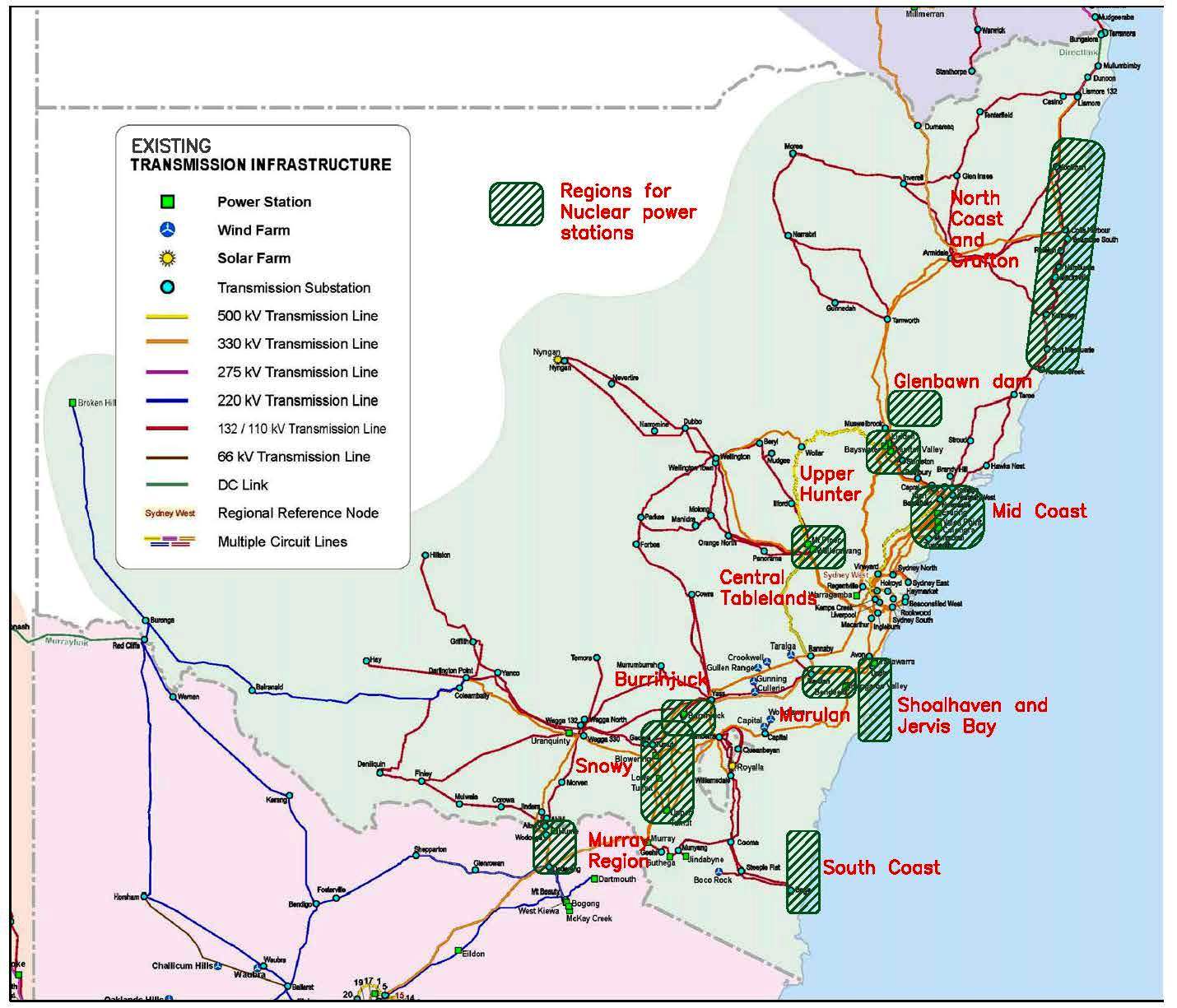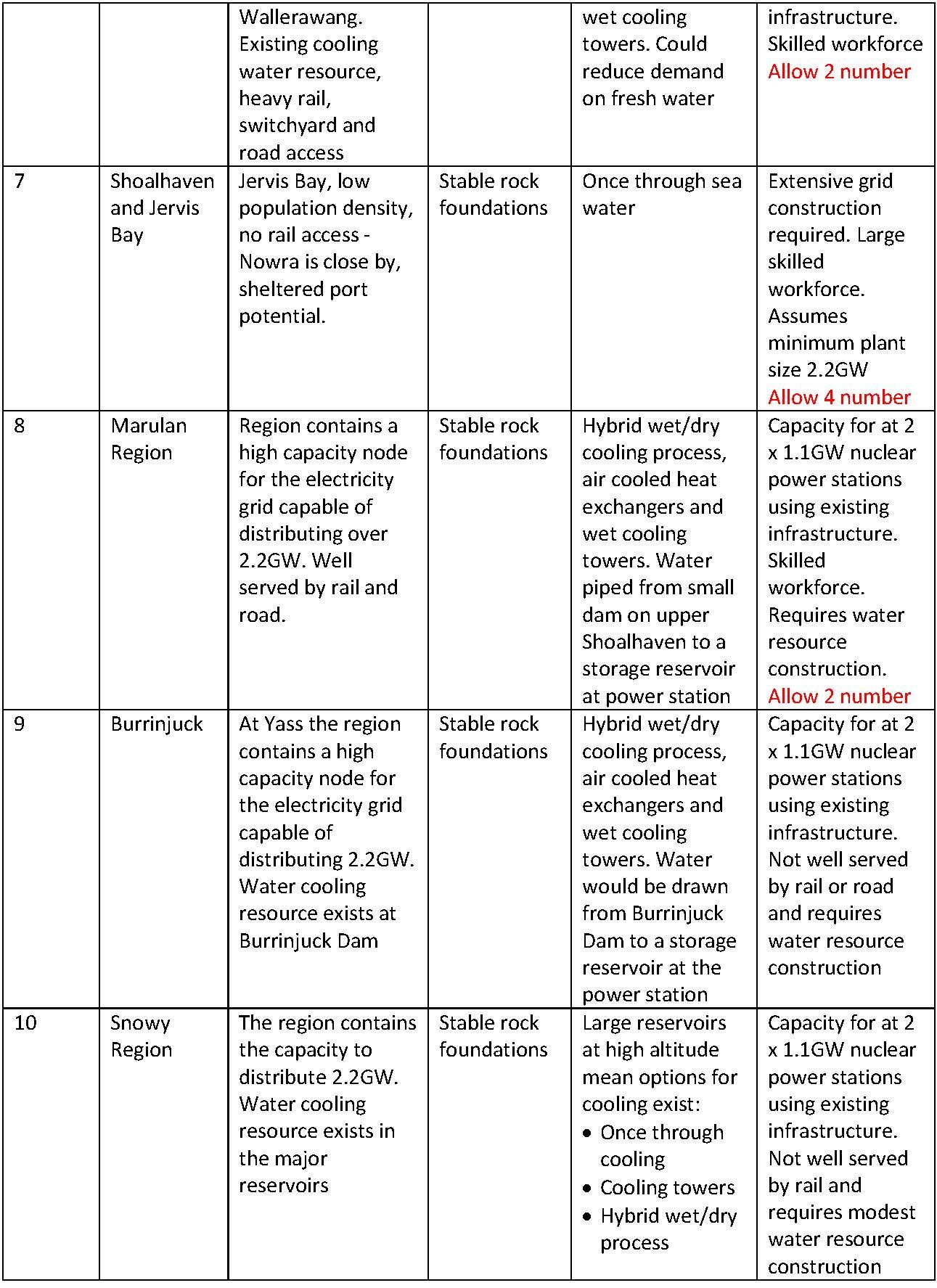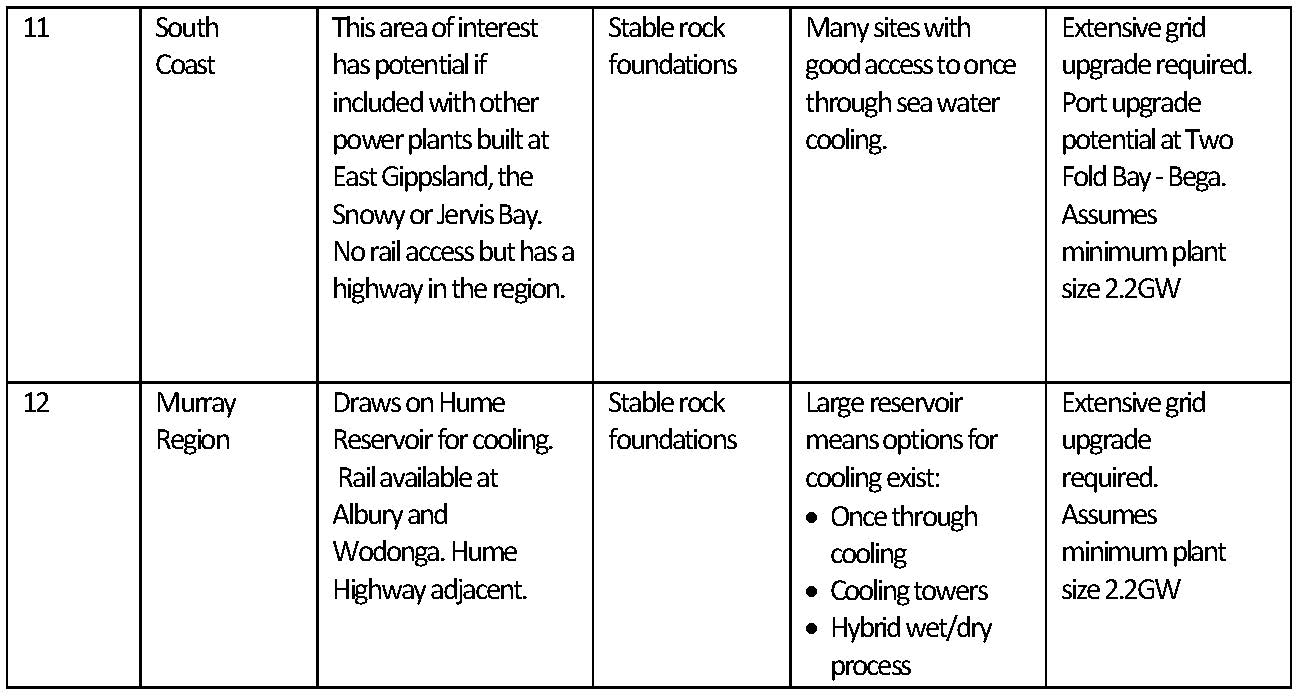
NSW Regions of Interest
Edition 3, Revised 19/10/2016
Regions of Interest for Nuclear Power Plants in New South Wales
This plan envisages 18 Reactors being constructed in NSW by 2040 providing 20.1GW of capacity operating at a capacity factor of 0.8 to provide 140.9 TWh of annual power. The image shows selected regions of interest placed on the existing grid. Some regions have power plant numbers assigned to them. These are shown in red and total 18 in number. Lower priority regions have infrastructure limitations and no reactors have been assigned to them. They may be given a higher priority after a detailed evaluation.
NSW and the National Grid
From a cost perspective advantages are gained where new low carbon generation sources are able to maximise the use of the existing National electricity grid.
In New South Wales some sites such as those in the Central Tablelands, Upper Hunter and Mid North Coast can readily meet the needs of nuclear power plants because they would be replacing similarly sized coal and gas plants. Elsewhere substantial reconstruction of the grid will be required to distribute power from the new Nuclear generating sites. Nuclear power plants are large and are best built with multiple reactors at each site. This means the transmission lines need to be at least 330 kV and ideally 500kV.
New sites will need to be located close by the grid or will require regional grid expansion to be taken into account. This will include in most cases new switchyards and transformers in addition to the transmissions lines.
A very detailed discussion of the challenges being faced by countries integrating different forms of energy generation onto their grids can be found at: Electricity Transmission Grids – World Nuclear Association
Cooling NSW Nuclear Plants
In New South Wales coal fired plants were constructed adjacent to available coal mines and other infrastructure.
New nuclear plants will where possible take advantage of the resource used for cooling at these plants. On the mid North Coast, this is sea water while in the Central Tablelands and Upper Hunter, fresh water has traditionally been used.
In an effort to reduce the environmental impact upon inland water resources, modern nuclear power plants are being designed to use a hybrid system of air and water cooling. During periods of low water availability the degree of air cooling can be increased though at a modest reduction in power output.
At large coastal plants such as that in the Jervis Bay region, sea water would be the sole form of cooling.
The tabulation shows the anticipated type of cooling at each plant
Australia’s long coastlines provide many options for locating nuclear power plants
To overcome issues surrounding temperature rises in inland locations cooling towers or mechanically driven systems known as hybrid and recirculating systems can be used. These are now the only option used in the United States under their EPA guidelines.
While recirculating systems don’t add heat to the river or lake, they do consume water through evaporation. In Australia the availability of sizeable inland rivers are limited though a number of large reservoirs such as Hume Reservoir near Albury or Burrinjuck Dam near Yass could be studied for their suitability.
An excellent and detailed outline of the cooling options is available at: Cooling Power Plants | Power Plant Water Use for Cooling – World Nuclear Association




